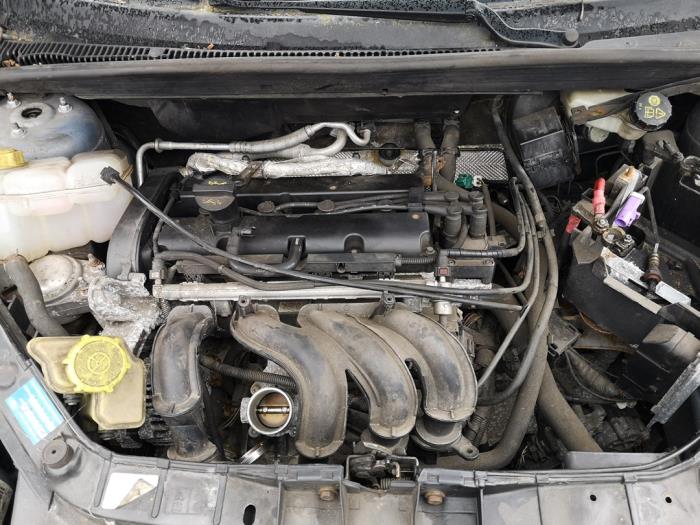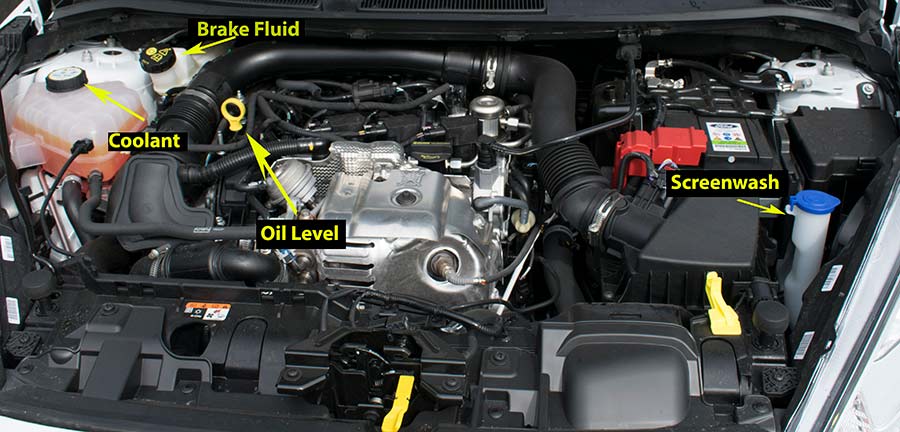Enhance Your Driving Experience with a Reliable Ford Fiesta Engine
Enhance Your Driving Experience with a Reliable Ford Fiesta Engine
Blog Article
Unlocking the Power of Engines: A Comprehensive Overview to Performance and Performance
Understanding the elaborate technicians of engines is critical for both performance enthusiasts and everyday chauffeurs. The responses may redefine our method to engine performance and effectiveness in ways that are both enlightening and important.
Comprehending Engine Essentials
What constitutes the basic technicians of an engine? At its core, an engine is an equipment made to transform gas right into mechanical power via a collection of controlled explosions or combustion processes. The primary components include the cyndrical tube, piston, crankshaft, camshaft, and shutoffs. The cyndrical tube functions as the chamber where burning happens, while the piston moves within the cyndrical tube to transform the energy from burning into linear activity (ford fiesta engine).
The crankshaft then transforms this straight activity into rotational energy, which eventually powers the car. The camshaft controls the opening and closing of the shutoffs, regulating the consumption of air and fuel and the expulsion of exhaust gases. In addition, the engine depends on a carefully adjusted fuel-air mix, ignition system, and cooling down system to make sure optimum efficiency and efficiency.
Recognizing engine fundamentals additionally includes identifying the importance of engine cycles, such as the four-stroke cycle, that includes intake, compression, exhaust, and power strokes. Each phase is important in guaranteeing the engine works smoothly and successfully. Mastery of these essential technicians prepares for exploring more complex engine characteristics and performance metrics, necessary for maximizing both power result and performance.
Secret Efficiency Metrics
Key performance metrics are crucial for assessing an engine's performance and power output, supplying valuable insights for both makers and consumers. These metrics act as standards for engine efficiency, allowing for informed decisions in buying, layout, and manufacturing.
One of the main metrics is horsepower, which measures the engine's capability to do job over time. Torque, gauged in pound-feet, is another essential metric that indicates the engine's rotational force, directly affecting acceleration and towing ability. Gas performance, typically gauged in miles per gallon (MPG) or litres per 100 kilometers (L/100km), analyzes how properly the engine transforms gas right into movement, impacting environmental considerations and operational prices.
In addition, thermal performance procedures exactly how well an engine transforms fuel energy right into valuable work, exposing understandings right into energy losses primarily via heat. Exhaust degrees, consisting of carbon dioxide and NOx, are additionally crucial, showing the engine's ecological impact and conformity with governing standards.

Tuning Techniques for Efficiency
Tuning strategies play a significant function in boosting engine effectiveness by optimizing performance metrics recognized in earlier discussions (ford fiesta engine). Various methods exist to adjust an engine, each adding to boosted fuel economy and minimized discharges
One efficient method is readjusting the air-fuel proportion, making certain the engine operates within the ideal burning program. A leaner combination can boost gas effectiveness, yet it should be balanced to prevent misfires or engine knock. In addition, reprogramming the engine management system can alter specifications such as ignition timing, which additionally boosts effectiveness while maintaining power outcome.
An additional essential method includes modifying the consumption and exhaust systems. Updating to high-performance air filters and exhaust headers can lower back pressure, facilitating better airflow. This permits the engine to breathe even more openly, leading to enhanced combustion effectiveness.
Furthermore, the execution of innovative tuning tools, like dyno testing, supplies exact data that allows targeted adjustments. Routinely keeping this website track of these efficiency metrics makes sure that adjusting efforts produce the preferred efficiency end results. Jointly, these methods not just bolster engine performance but likewise contribute to long-lasting sustainability in engine procedures.
Upkeep for Ideal Performance
Routine engine upkeep is vital for attaining optimal performance and long life. A well-kept engine not only operates successfully yet also minimizes the threat of pricey repair work and malfunctions. Trick elements needing routine focus consist of oil, filters, belts, and ignition system.
Altering the engine oil at recommended intervals is important, as oil lubricates relocating parts and stops getting too hot. Changing oil and air filters ensures that pollutants do not harm engine feature. Disregarding these parts can bring about decreased effectiveness and prospective engine damages.
Furthermore, examining and changing used belts and tubes is important to protect against sudden failings. Timing belts, in particular, ought to be replaced according to the manufacturer's routine to avoid disastrous engine damages.
Flicker plugs should likewise be inspected and changed as needed, considering that they play an important duty in ignition and gas effectiveness.
Future Trends in Engine Innovation
Accepting advancements in technology, the future of engine layout is positioned to reinvent efficiency and effectiveness across different applications. Crossbreed and totally electric powertrains are becoming significantly conventional, using lowered exhausts and improved gas efficiency.
Additionally, advancements in products scientific research are bring about lighter, stronger elements that improve engine efficiency while lowering energy usage. Advanced production methods, such as 3D printing, enable the development of complicated geometries that improve air flow and thermal administration, thus maximizing burning processes.
Furthermore, the integration of fabricated knowledge and artificial intelligence is readied to change engine diagnostics and performance adjusting. These modern technologies pop over to these guys can analyze substantial amounts of information in genuine time, making it possible for predictive upkeep and customized efficiency enhancements.
Conclusion
In conclusion, unlocking the power of engines needs an extensive understanding of their technicians and efficiency metrics. Applying effective adjusting methods and sticking to routine upkeep techniques substantially enhance engine abilities. As the automotive landscape evolves, accepting future trends in innovation, including electrification and advanced production, will be important for optimizing performance and efficiency. This thorough method not just benefits lovers however likewise contributes to sustainable services in the realm of automobile design.
Additionally, the engine relies on a carefully calibrated fuel-air mix, ignition system, and cooling system to guarantee optimal efficiency and efficiency.
Recognizing engine basics also entails acknowledging the importance of engine cycles, such as the four-stroke cycle, which consists of intake, compression, power, and exhaust strokes. Proficiency of these basic auto mechanics lays the foundation for discovering much click here now more complicated engine characteristics and efficiency metrics, necessary for optimizing both power outcome and efficiency.

Welcoming advancements in innovation, the future of engine layout is poised to transform performance and efficiency throughout different applications.
Report this page